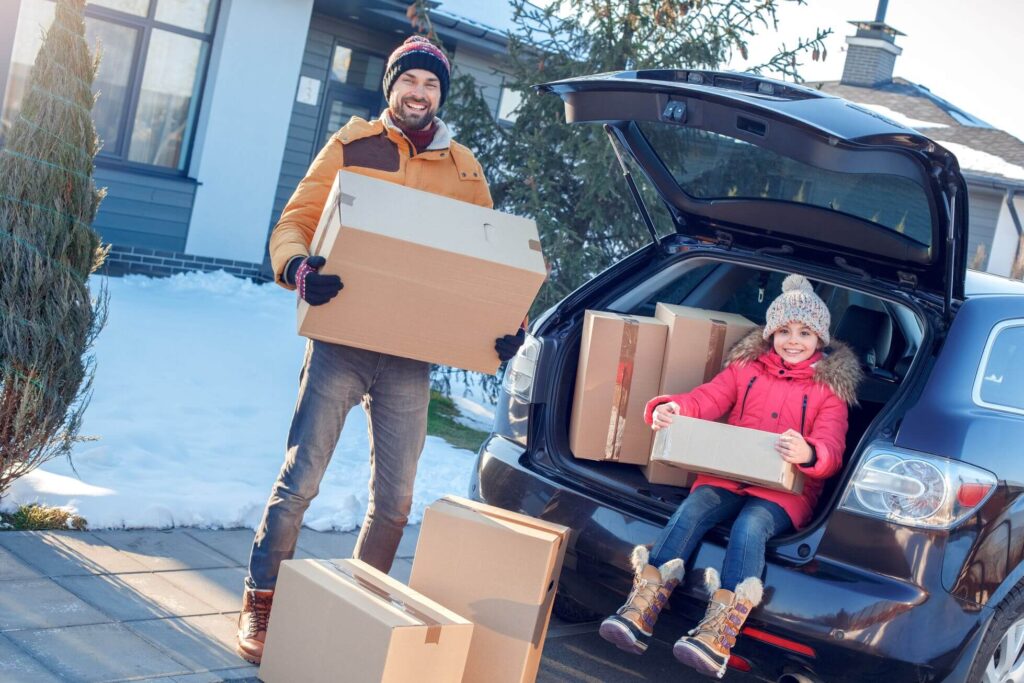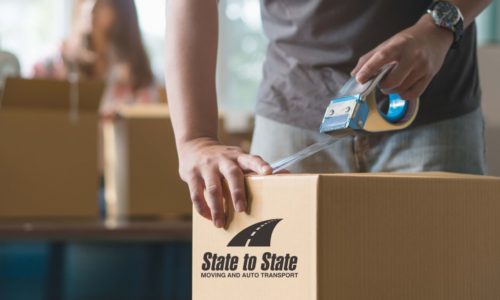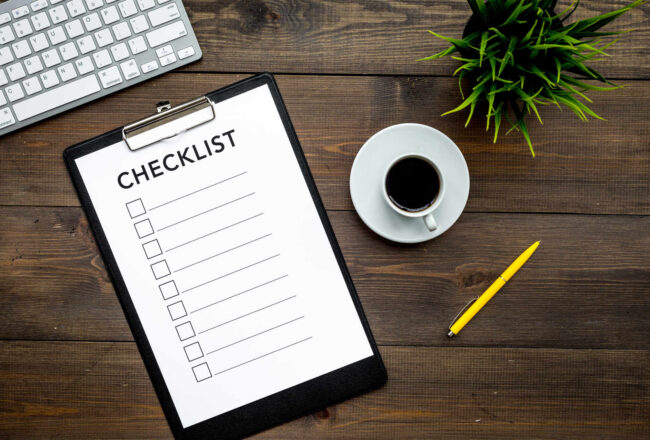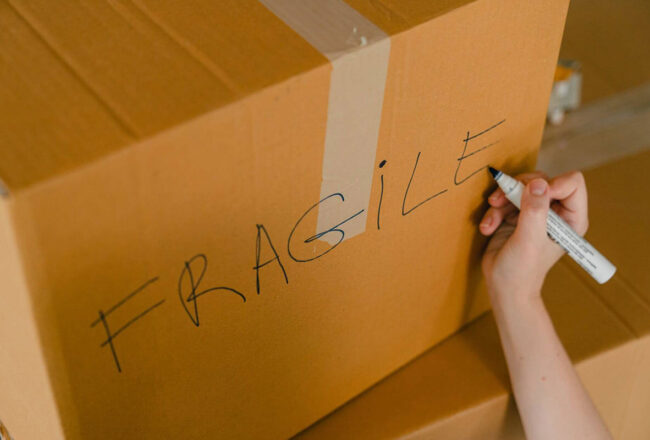Boxing up your belongings can be a bit like a real-life game of Tetris. Here, knowing how to pack for a move the right way becomes your cheat code, the difference between a chaotic shuffle and a harmonious march into your new home. So, let’s take a shortcut filled with insider tips and strategies, ensuring your stuff is snug and secure for the big move.
How to Pack for a Move and Set Yourself Up for Success
Begin with decluttering and organizing your possessions, holding onto essentials only. Use robust boxes, along with bubble wrap and padded paper, to safeguard your belongings, giving extra care to the most delicate objects.
Approach it one room at a time, clearly marking each box with its contents and intended room. Utilize clothing or packing peanuts to fill any voids, optimizing box space. Finally, assemble a separate box for necessities to ensure they’re readily available when you reach your new home.
A Moving Checklist Before the Actual Packing – Here’s What You Should Do Weeks in Advance
Believe it or not, according to the 2024 Gitnux MarketData Report, 61% of people consider moving more stressful than getting divorced or getting a new job.
From sorting through years of belongings to making sure everything arrives safely, the sheer volume of tasks can feel like a whole mountain to climb. But here’s the kicker – starting early can be your golden ticket to a stress-free move.
No matter the scope, having a set packing schedule and sticking to it can make a world of difference. By organizing in advance, you can systematically dismantle the chaos, one task at a time.
Less Is More – Lighten the Load by Decluttering
Before you even think about sealing that first box, let’s talk about the magic of minimalism. When it comes to interstate moving, trimming down your belongings lightens the load, and therefore, it lifts a financial weight off your shoulders, too. Here’s how to declutter efficiently:
- Designate areas for items to keep, donate, sell, or get rid of,
- Focus on one space before tackling the next to prevent feeling overwhelmed,
- If something hasn’t been used in the last year, it’s likely you won’t need it in the future,
- Identify items that can be recycled or repurposed,
- Set aside sentimental items, but limit yourself to a specific number or box size to prevent overkeeping.
After your decluttering journey, you’ll likely have a collection of items you no longer need. This presents the perfect opportunity to donate to those in need, sell for extra cash to add to your relocation budget or gift to friends and family.
A Household Inventory Can Do Wonders Once It’s Time to Box Everything Up
In the maze of packing boxes for moving from state to state, creating a detailed relocation inventory can act as a roadmap. By cataloging each item, from furniture to knick-knacks, along with their condition and value, you’ll be able to move efficiently. Plus, it eases setting up your new space, making sure every piece finds its rightful place once you get to your destination.

Stock up on the Right Supplies – Here’s What You’ll Need for a Safe Relocation
When it comes to learning how to pack when moving interstate, snagging the right supplies is half the battle won. Without the proper materials, even the simplest of tasks can turn into a logistical nightmare. To make sure this doesn’t happen, here’s a rundown of the relocation essentials you’ll need:
- Boxes in various sizes,
- Duct tape,
- Plastic and bubble wrap,
- Packing paper,
- Foam peanuts,
- Marker pens for box labels.
Professional State-To-State Movers Can Come With Their Own Quality Materials
Taking the DIY route when organizing a home move can be rewarding, but it’s not without its challenges. That’s where hiring professionals such as State2State Movers comes into play, simplifying the whole ordeal significantly.
Opting for comprehensive packing services means you don’t have to worry about gathering supplies – these pros come equipped with everything you need. Even your biggest, most prized four-wheeler can be taken care of with expert auto transport. With such perks, it’s a route definitely worth considering.
Go Room by Room and Begin With the Things You Don’t Need First
So, you’ve decided to have a full-on DIY move or at least take on a chunk of the work yourself. But where do you even start? Well, one of the most efficient strategies is to tackle one room at a time, beginning with items you use less frequently.
On top of that, designating one room as your working station can make it easier to keep track of what’s been packed and what’s left to do. Let’s take it room by room and share some essential moving packing tips for each space:
Deal With All of the Fragile Items in the Kitchen
The kitchen, with its fragile items and a myriad of shapes and sizes, can be a real head-scratching puzzle. The key is to give each item the attention it deserves. Pack glasses and plates individually in bubble wrap or padded paper, securing them with tape.
Heavier items should always go at the bottom of boxes, with lighter, more delicate pieces on top. Use dividers for extra protection and fill any empty spaces with crumpled paper to prevent movement. Last but certainly not least, don’t forget to label each box as “fragile” and specify its contents – it might save you a lot of headaches down the road.
Efficient Packing Methods for the Bedroom and Living Room
Bedrooms and living rooms often contain a mix of large furniture, electronics, and personal items. Start by dismantling furniture to save space and protect items during the move. Use original boxes to pack electronics when possible, or wrap them in anti-static bubble wrap to prevent damage. Clothing can be left in drawers or packed in suitcases to maximize space.
Tackling the Bathroom and the Box of Essentials
Dealing with the bathroom requires a careful balance between accessibility and safety. Begin by sorting through products and disposing of anything expired or unnecessary. For the rest, leak-proof seals are crucial – consider taping lids shut and placing items in zip-lock bags.
Towels can serve as padding for fragile items. Additionally, assembling a box of essentials – items you’ll need immediately upon arrival like toiletries, a change of clothes, and a few basic tools – will be a lifesaver. This box should be the last one packed and the first one opened so you have access to necessities from day one.
Prepping for the Big Day – Create One Final Checklist to Make Sure Nothing Is Overlooked
Having a systematic approach that breaks down the mammoth task of relocation into smaller, more manageable activities reduces the odds of overlooking anything. From the largest piece of furniture to the smallest knick-knack, each item will get a spotlight moment to shine, making sure nothing is left behind.
However, even with the most meticulous planning, there’s always a slight chance something might slip through the cracks. That’s why having one final relocation checklist, a master overview of everything that needs to be done before the truck tolls up, becomes invaluable. Here’s how it should look:
- Utilities and services – confirm disconnection dates for your current home and connection dates for your new one,
- Company confirmation – reconfirm the arrival time and details with the movers you’ve hired,
- Important documents – ensure passports, IDs, and important documents are safely packed and by your side during the whole ordeal,
- Valuables and personal items – double-check that your most prized possessions are accounted for and securely packed,
- Final walkthrough – schedule a time to do one last walkthrough of your home, checking closets, drawers, and storage areas for anything left behind.
Safety Is the Top Priority Throughout the Whole Ordeal
Above all, remember that safety should never take a backseat. Make sure you’ve got a well-stocked first aid kit that is easily accessible when the big day comes. Staying hydrated and dressing in comfortable, protective clothing is also crucial for your well-being throughout the day. It’s these precautions that can make the difference between a smooth transition and one filled with unnecessary complications.

Starting the Next Chapter – Unpack the Essentials First and Gradually Move to Other Items
So, you’ve arrived at your new abode, standing amidst a sea of boxes that seems to stretch as far as the eye can see. Before you can truly start this next exciting chapter, there’s one intimidating task ahead – figuring out how to unpack efficiently. It’s easy to feel overwhelmed, wondering where to begin in this labyrinth of cardboard and tape.
However, just as with boxing up your belongings, an organized approach to unpacking can save you a lot of headaches. Starting with the essentials – those items you need for daily living – allows you to quickly establish a sense of normalcy. Gradually, you can then tackle the less critical items, integrating them into your new home at a comfortable pace. Here are some tips to set you up on the right foot:
- Assemble and place large furniture before unpacking smaller items to avoid reorganizing later,
- Unpack one room at a time, starting with the most frequently used spaces,
- Keep a box cutter and trash bags handy for breaking down boxes and disposing of packaging materials,
- Test electronics and appliances early to ensure they survived the trip unscathed,
- Don’t rush to unpack everything in one day – allow yourself time to adjust and make thoughtful decisions.
Before and After the Relocation, Staying Organized Is Key
If there’s one crucial thing you should take away from this guide, it’s the mantra of staying organized. It holds true both before and after your relocation. From the initial planning phase to the final stages of settling into your new abode, a methodical strategy ensures that you remain in control, transporting your life from one chapter to the next with intention and care.

Need an Experienced Helping Hand Throughout This Life-Changing Transition? Contact State2State Movers
There’s no going around it – a systematic approach is the only way to go about this life-changing event. It starts with a meticulous plan and determined decluttering, keeping a well-organized spirit as you box your belongings one room at a time. This way, you’ll be able to tackle any challenges like a pro, setting the stage for a smooth and stress-free transition.
Need experienced support as you go through the whole process? State2State Movers are here to help. With our professional long-distance moving services, we’re more than equipped to handle every aspect of your move. Contact us today to begin your next chapter on the right foot with a team that knows just how to get you there.















